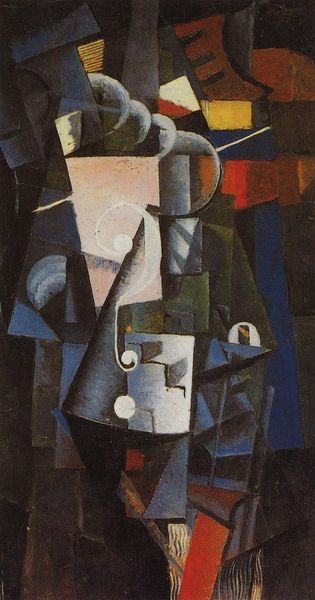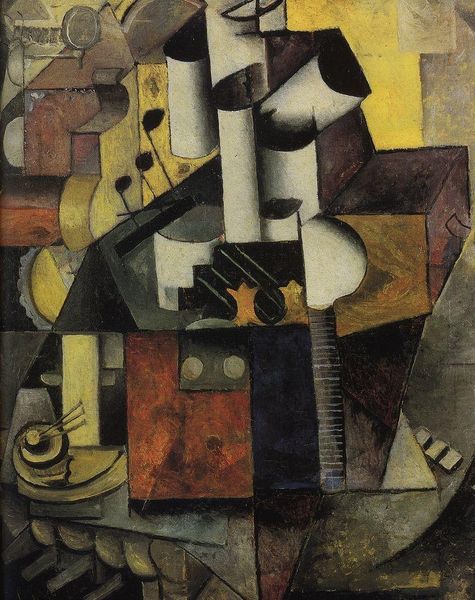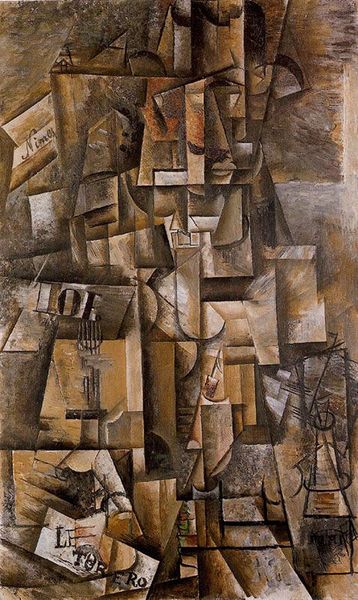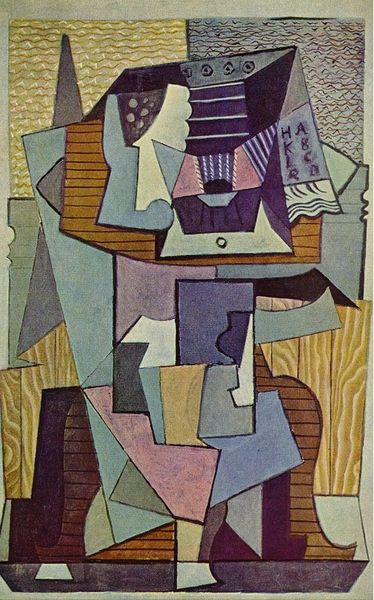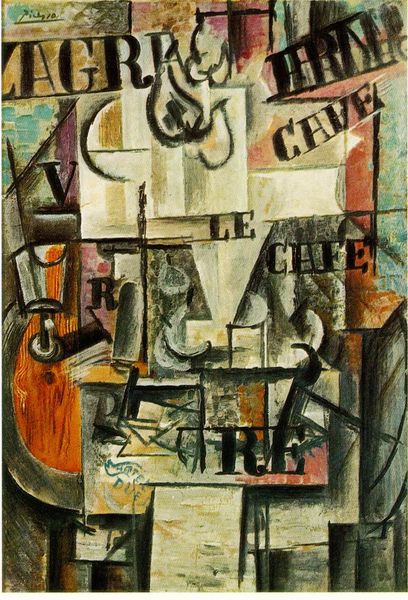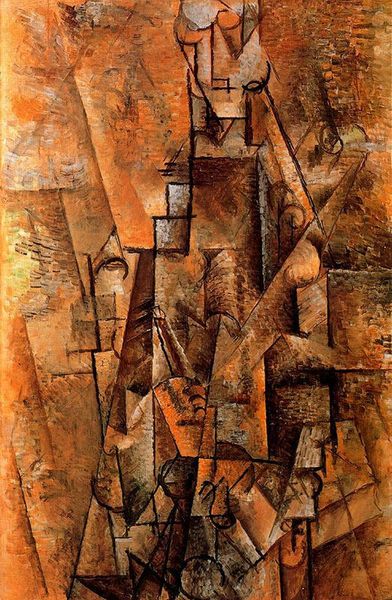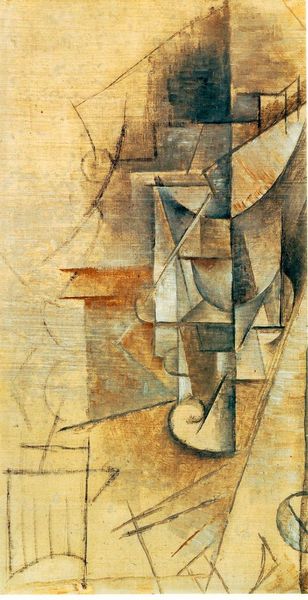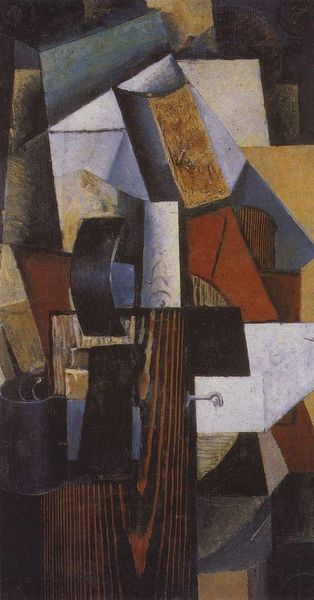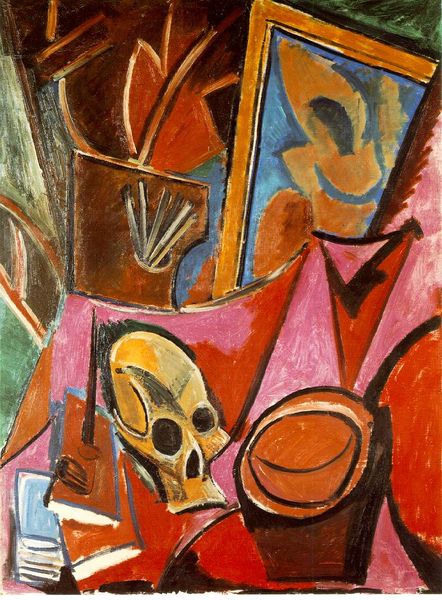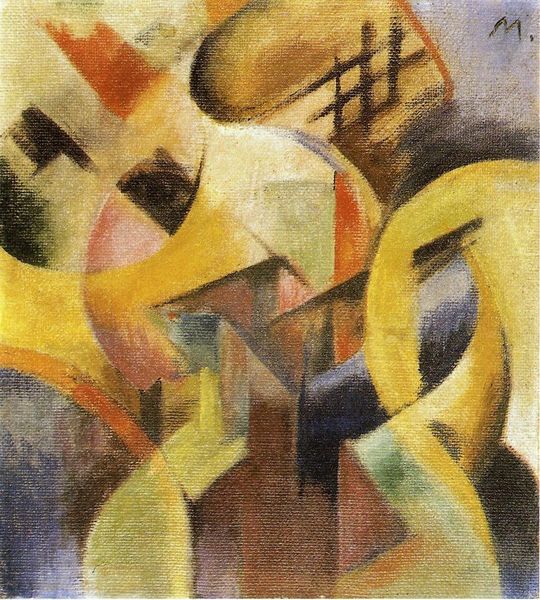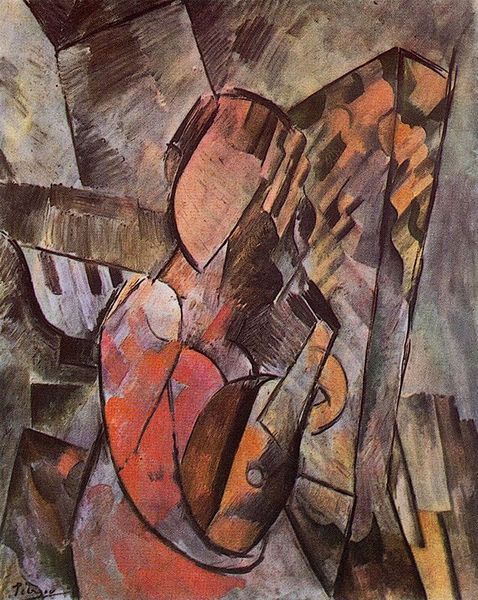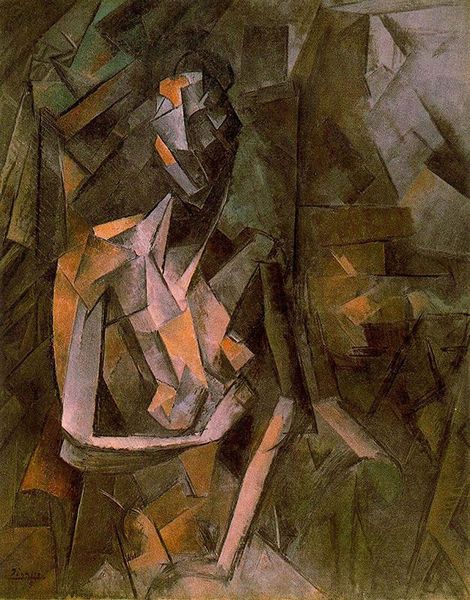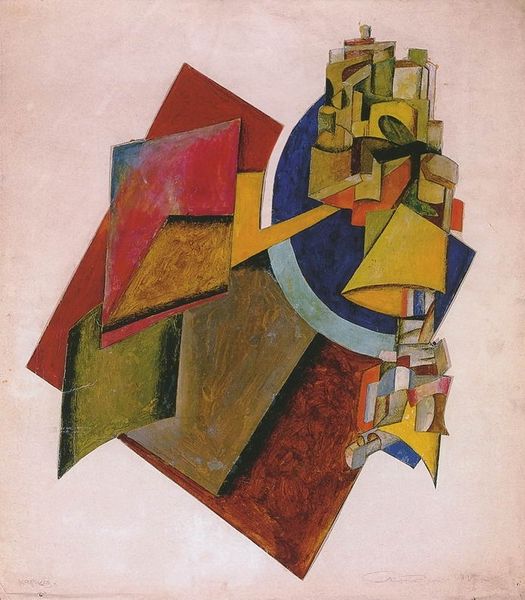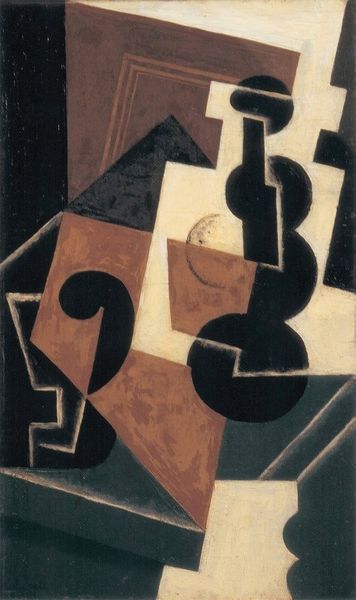
oil-paint, impasto
#
portrait
#
cubism
#
oil-paint
#
oil painting
#
impasto
#
geometric
#
russian-avant-garde
#
modernism
Copyright: Public domain
Curator: "The Lady at the Piano," created by Kazimir Malevich in 1913 using oil on canvas. What's your first read of this image? Editor: Utter chaos! I mean that in the best possible way. It's a beautiful mess of orange, gray, and black. Visually, it’s fractured but intense – almost as if you can hear the cacophony of notes gone wild. Curator: Chaos is definitely one way to read it! The Russian Avant-Garde was all about shattering traditional perspectives. Malevich has definitely splintered our expectations of portraiture. He has given us more of an essence, an inner music, perhaps, than a literal likeness. Editor: That's it, essence! See, all the piano keys point us towards emotional keys! Even though her form is almost abstracted beyond recognition, there's a feeling here that survives translation – a feeling that music evokes a spirit and then the lady, a mere reflection. The heavy impasto contributes too, doesn’t it? Each brushstroke is a physical mark, echoing the deliberate striking of the keys. Curator: Absolutely! I would even go a little bit deeper, the piano is no mere thing but it symbolizes a gateway, you know. Look at how the geometric planes create depth and almost swallow the subject in them, and you get an indication of something… elemental. Almost ritualistic in essence. Editor: Hmmm, that takes me into unexpected territory, elemental and ritualistic? Like Orpheus charming stones with his music! Yes, I see your point; perhaps that explains the absence of sentimentality. There are so many visual quotes, and nothing in it has just the original message! Curator: It's challenging but exciting because he has allowed us to experience a modern subject in a new, and unexpected language, you know? Editor: That's a fine line, really. The way that abstract paintings seem to be so elusive they require time for full interpretation, rather than demanding the initial attention required by more conventional figurative artwork. I like that. Curator: I agree, the abstraction becomes an open invitation for a conversation between the artist and the audience. An invitation to be puzzled by. What do you take away now, now that we have spent some time exploring its dimensions? Editor: I'm seeing less chaos and more of a structured dissonance. Malevich provides these blocks but it requires we bring our own imagination to put the portrait back together. That is an idea.
Comments
No comments
Be the first to comment and join the conversation on the ultimate creative platform.
